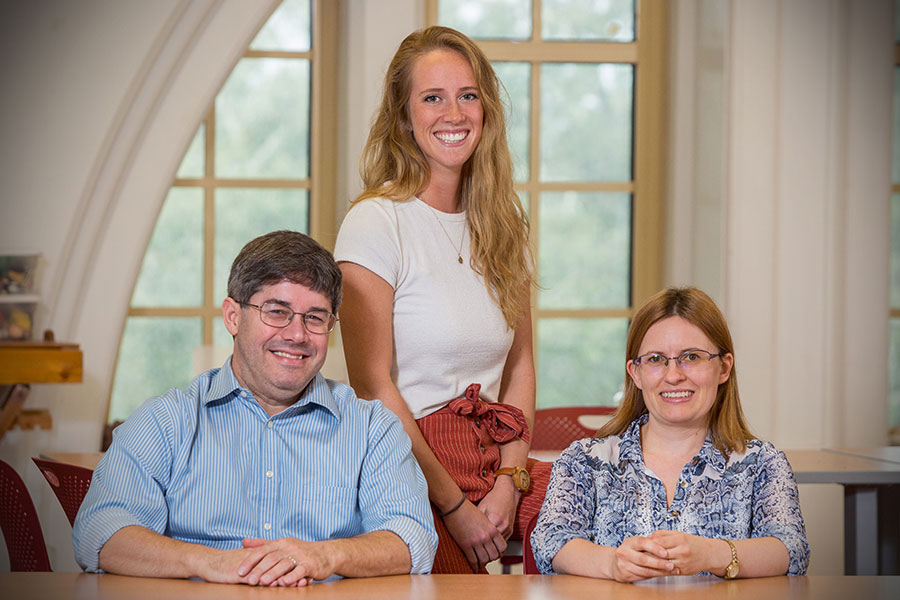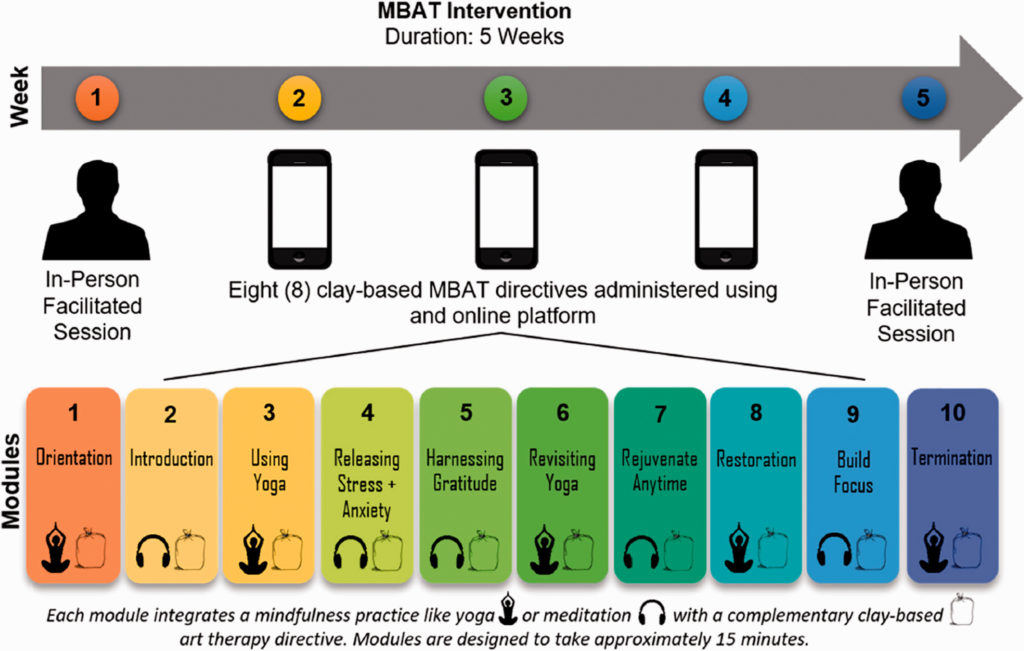
It’s been said that art heals. Now, Florida State University researchers have developed an online intervention that combines mindfulness practices, art therapy and the simple act of manipulating clay to reduce stress and anxiety in college students.
In a study published in SAGE Journals, the researchers described the results of what may be the first electronically delivered mindfulness-based art therapy (MBAT) intervention.
“It appears as though the intervention, at least in some individuals, may be as effective as cognitive behavioral therapy, which is the gold standard of behavioral treatment for anxiety disorders,” said Gregg Stanwood, an associate professor of Biomedical Sciences and Neuroscience at FSU’s College of Medicine and co-author of the study. “With this online format, we can potentially deliver an intervention in a much more rapid and cost-effective manner than cognitive behavioral therapy.”
MBAT combines mindfulness practices with art therapy to promote health, wellness and adaptive responses to stress. Mindfulness is a practice derived from ancient Eastern roots that refers to the process of attending to experiences happening in the present moment.
“We worked to create an accessible platform by which college students could take ownership in addressing their mental health,” said Theresa Van Lith, associate professor of art therapy in FSU’s College of Fine Arts and co-author of the study.
The researchers initially conducted intensive face-to-face, two-hour therapy sessions for eight weeks, but soon realized that this strategy did not accommodate students’ busy schedules. Megan Beerse, a research assistant on the project, reconfigured the MBAT intervention so that it could be administered online via Canvas, a learning platform where students can access class materials.
The proof-of-concept pilot study was set up through Canvas as 15 minutes of MBAT once a week for 10 weeks. A typical directive within the program would be a brief breathing exercise or yoga practice followed by handling clay while keeping a prompt in mind to enhance additional mindfulness. To measure participants’ anxiety and stress levels, researchers collected their saliva samples at the beginning and end of the intervention, along with self-report questionnaires on anxiety and stress levels.
Although it was still difficult to get students to participate in the study for the full 10 weeks, the pilot demonstrated significant decreases in anxiety and stress symptoms and salivary cortisol in anxious but healthy college students.
On a follow-up study, Beerse, Stanwood and Van Lith condensed the program to 15 minutes of MBAT twice a week for five weeks, keeping all of the same exercises but cutting the commitment time in half and upgrading the frequency.

“We doubled retention and had over 300 students asking about participating in the study,” Beerse said. “We ended up having much higher buy-in and engagement from students themselves, so the frequency helped enhance the user engagement.”
Researchers conducted one initial, in-person facilitated session, then eight 15-minute, clay-based MBAT directives administered through Canvas, followed by one final in-person session. The follow-up study involved 77 participants and demonstrated positive effects on both anxiety and stress.
Moving forward, the researchers plan to focus on dissecting the role of the art-making versus the mindfulness aspect. To accomplish this, researchers will enhance the monitoring of saliva and expand the number of neuroinflammatory markers analyzed in the study.
The online MBAT program provides another option for those struggling with anxiety and stress, especially those who are considering seeking traditional mental health services. With a stronger focus than ever on solving the mental health crisis, offering an alternative for those struggling with anxiety and stress is considered revolutionary.
“I think it’s incredibly exciting,” Stanwood said. “I think that it’s potentially paradigm changing.”
Scott Pickett, an associate professor of Behavioral Sciences and Social Medicine at FSU, also contributed to the study and will be a clinical collaborator on the next project.
The project was funded by the Florida State University Council on Research and Creativity. The FSU Office of Commercialization is supporting this project further with Grant Assistance Program (GAP) funding, which will allow the researchers to develop a mobile application centered around the research.
For more information about the College of Fine Arts, visit cfa.fsu.edu. For more information about the College of Medicine, visit med.fsu.edu.




